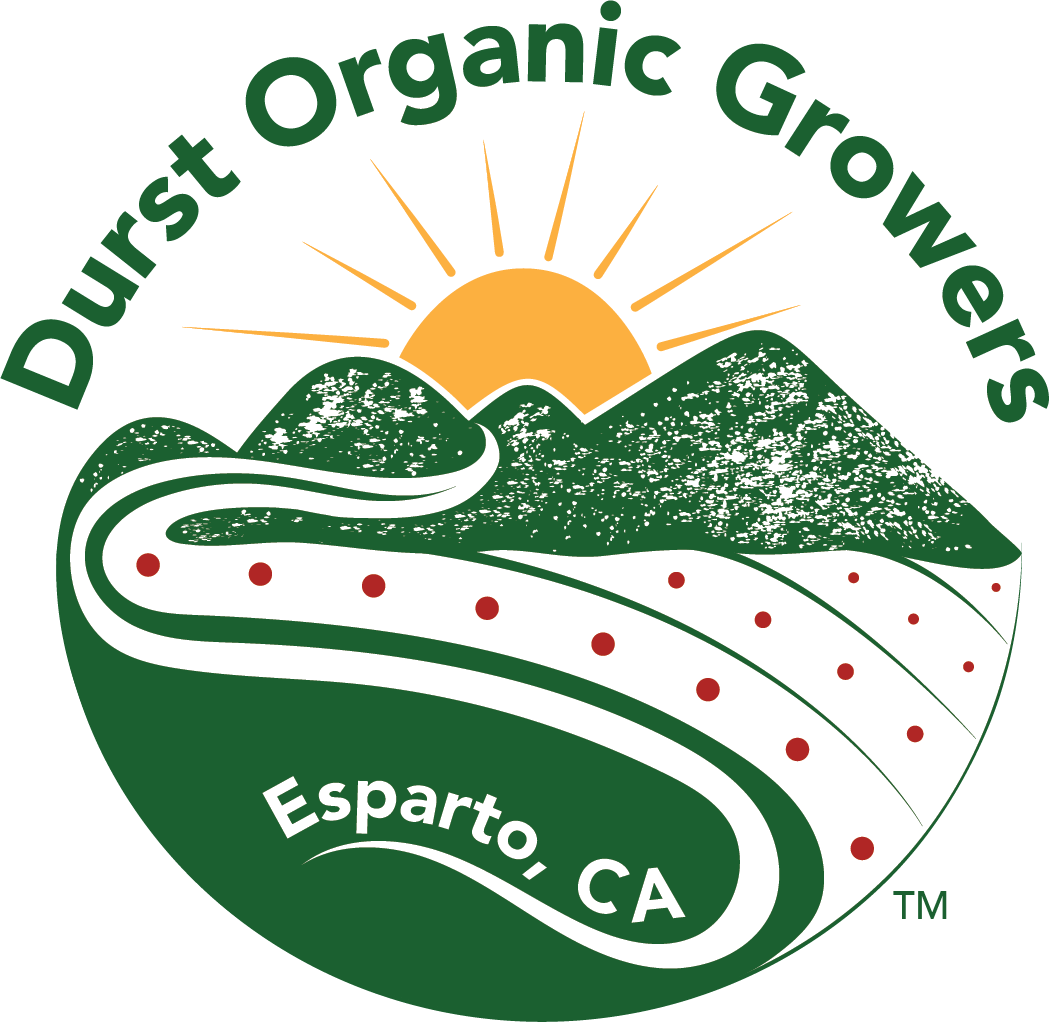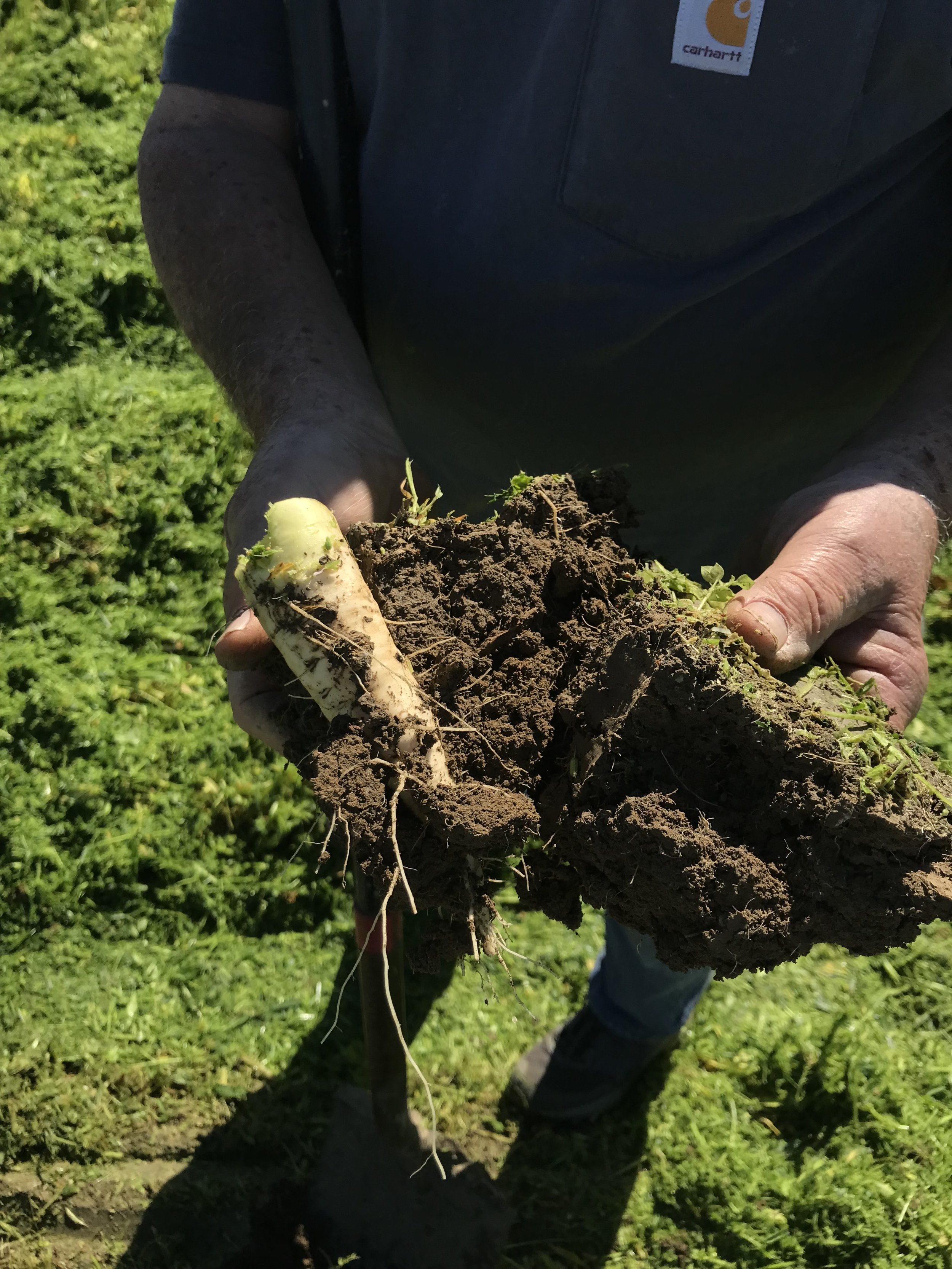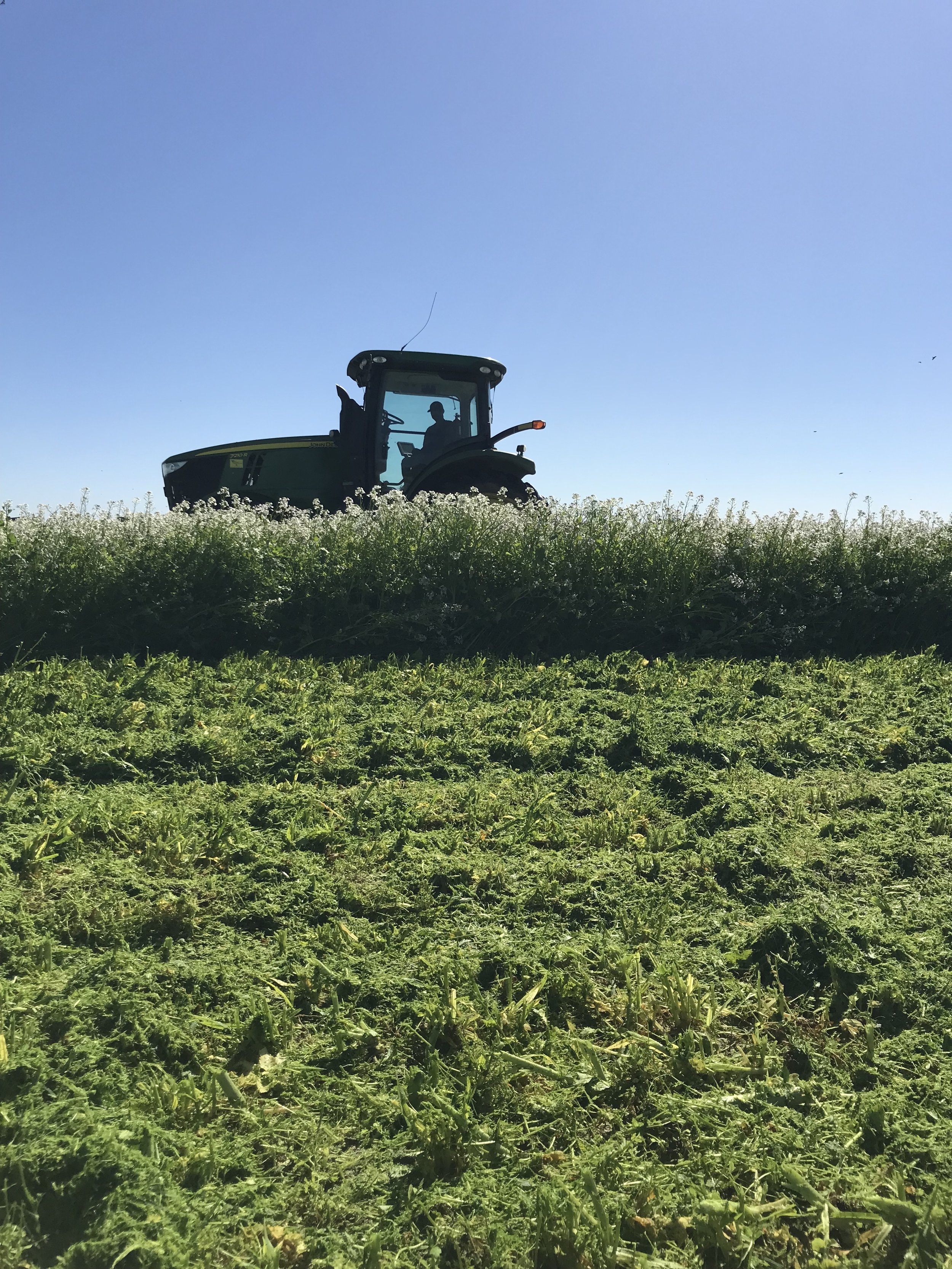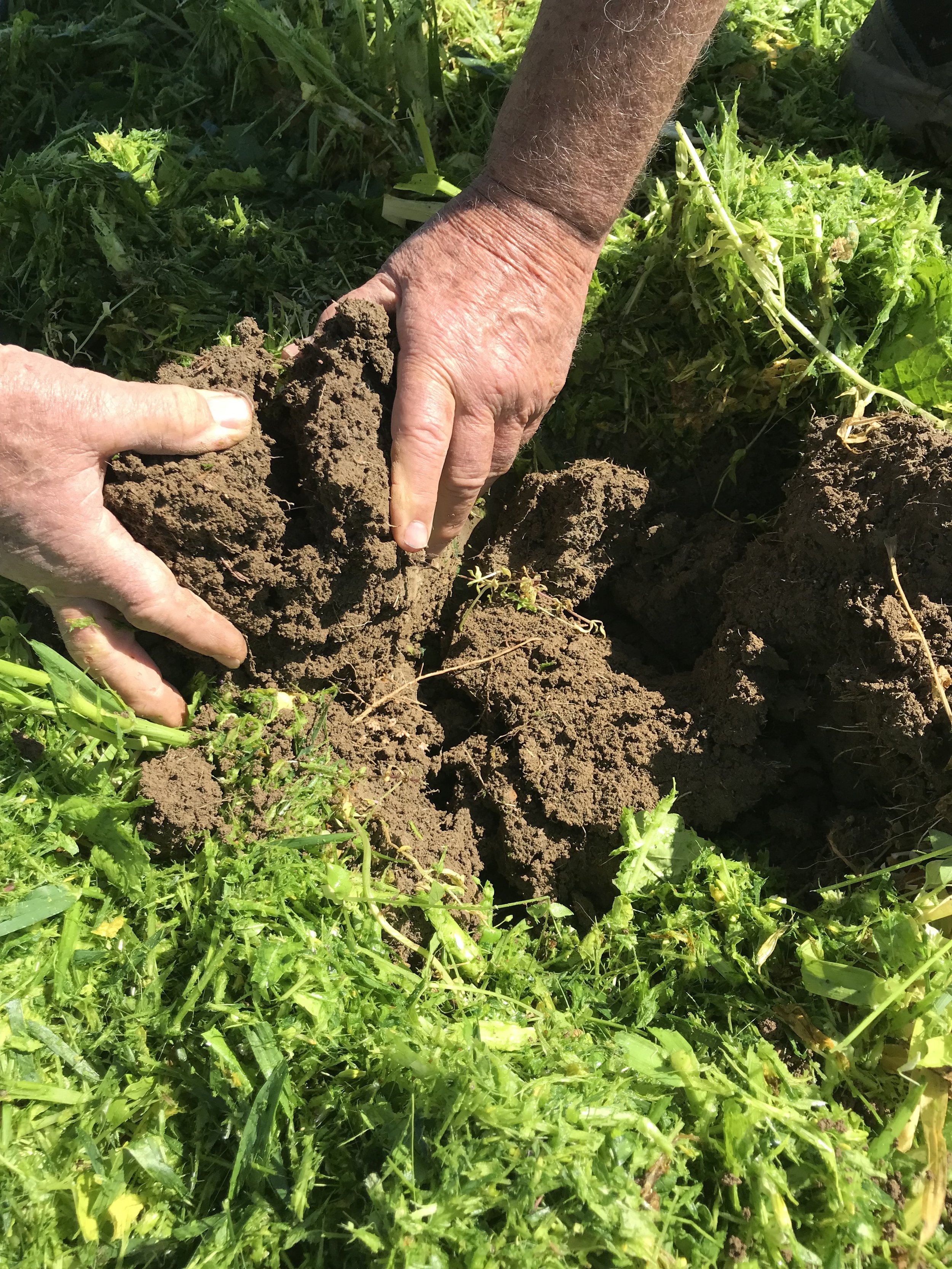Cover Crops: What, How, and Why
A mid-mow check of the cover crop field
Cover crops are kind of a big deal in the organic farming world, and are becoming more widely used in conventional operations, as well. You may have heard of their benefits in “carbon sequestering,” a real buzz-topic of late, but the benefits of cover crops extend well beyond their ability to create, capture, and recycle carbon.
First Things First:
A “cover” crop is different from a “cash” crop in that it is not grown with the intention of being eaten (by humans) or sold for profit; a cover crop is used for supporting soil health and adding fertility for future crops.
Generally, cover crops contain some mix of legumes, grasses, and brassicas. We plant ours in the winter to keep our fields “covered” during our slower season (when they’d otherwise be fallow). Growing ours in winter has the added benefit of using rainwater for irrigation (in a good year), but they can be grown in any season depending on water availability, climate, production needs, and species choice. For our winter cover crop, we use a mix of vetch, barley, and tillage radish. Each species adds something special to the mix, and as a whole they provide a range of benefits to our soils.
Vetch:
Hairy Vetch with its tangle of tendrils…can you spy the lady beetle pupa?
Vetch is a legume. Legumes have the ability to “fix,” or produce, a plant-available form of nitrogen, which they can then absorb and use in their growth. They do this through a partnership with bacteria that live in small growths, or “nodules” on their roots. The nitrogen-fixing nodules take the inert Nitrogen from the soil and turn it into a form of nitrogen plants can use (ammonium or nitrate). After the vetch is “terminated” (worked back into the soil), this plant-available nitrogen it produced becomes available for the following crop. Additionally, all the plant matter (or, “biomass”) above ground from the viney vetch becomes a source of carbon and food for the microbes in the soil (which, in turn, provides nutrients for future crops).
Here you can see a few of those lovely nitrogen-fixing nodules!
Barley:
Look at all that biomass! This field is just barley, planted for grain. This same plant gets used in our cover crop, but we interplant it (in a mix) with other species
As a fairly quick growing small grain barley provides good early ground cover, which can offer climbing support for the vetch while suppressing annual weeds. Although weeds are “cover crops,” too, we’d rather they not get established and disperse more of their seed in our fields. If the cover crop can out compete the weeds, then it makes it much easier for us to keep our weed seed banks at bay, while keeping our soils covered. Not only does it produce a nice amount of biomass that will be turned into the soil, barley is a good addition to our cover crops because its fibrous roots are adept at “mining” the soil for nitrogen that may not have been accessible to the previous crop. This helps limit nitrate leaching, and ensures that any “leftover” fertility we applied the season before is not lost. The root system also helps hold rainwater in the soil so it can percolate deeper down, rather than run off the field.
Radish:
Looking at the tillage radish root
Tillage Radishes’ special role in the mix is primarily to help break up the soil (they also provide nice biomass and competition against weeds as a “broadleaf” plant). The tillage radish grows a thick taproot that can penetrate the top 8 inches of the soil, breaking up compaction and lessening the need for deep mechanical tillage. The radish, like barley, is also good at scavenging for nitrogen and can help to capture excess nitrogen that may not have been used by the previous crop. Radishes also contain natural chemical compounds that act as “biofumigants” and can deter pests and disrupt disease cycles. It’s a powerhouse addition to the mix!
All Together Now!
Tillage Radish (white flowers, broad leaves), Barley (looks like large, luscious grass), Vetch (tangly tendrils)
All together, the cover crop mix has immeasurable benefits. Using a cover crop can:
· Aid in improving soil structure
· Enhance soil biological activity and health
· Protect soil surface from extreme weather conditions (such as heavy rain and strong winds)
· Prevent soil erosion
· Increase soil’s water holding capacity
· Suppress annual weeds
· Increase yield potential for future crops
· Make nutrients more available (by scavenging and relocating them) for the next crop
· Raise soil organic matter levels
Working it in:
To get the organic matter added back into the soil, we need to first mow it down and then lightly work it into the soil. I’m sure you’ve heard of “no-till” farming, but in those systems you need to use herbicides (most commonly), crimp rollers, grazers, plastic tarps (and a lot of time) or a combination of those methods to kill off the cover crop. Alternatively, some organic no-till growers mow or crimp roll their cover crops and then plant directly into it with their next crop, using the terminated plant matter as a sort of “green mulch.”
We opt for mowing with a flail mower and then use light tillage methods to work the organic matter into the soil where it can be broken down by microbes and soil-dwelling critters to become available for our next crop. The flail mower breaks the biomass from the cover crops into a fine mulch, like grass clippings from a lawn. It’s pretty incredible to see 4’ of plant matter become a soft mulch, ready to be fed to the soil.
If we look at the soil as a giant digestive system, the mowing would be similar to chewing, incorporating is like swallowing the food into the stomach, and from there the digestive process feeds nutrients and supports the bodies of plants and life in the soil.
After mowing, we come through with tillage equipment and work the plant matter into the ground. This process also helps break up the big roots from the cover crops, making it all much easier to be broken down and made available to future crops. Then we shape our beds for planting.
After all that, we “pre-irrigate” (irrigate before planting) the beds, using sprinklers, drip tape, or the rain, in hopes of germinating a crop of weeds, which we can then cultivate once before planting. This practice gives us a very clean start and allows us to wait longer before our first cultivation after planting.











